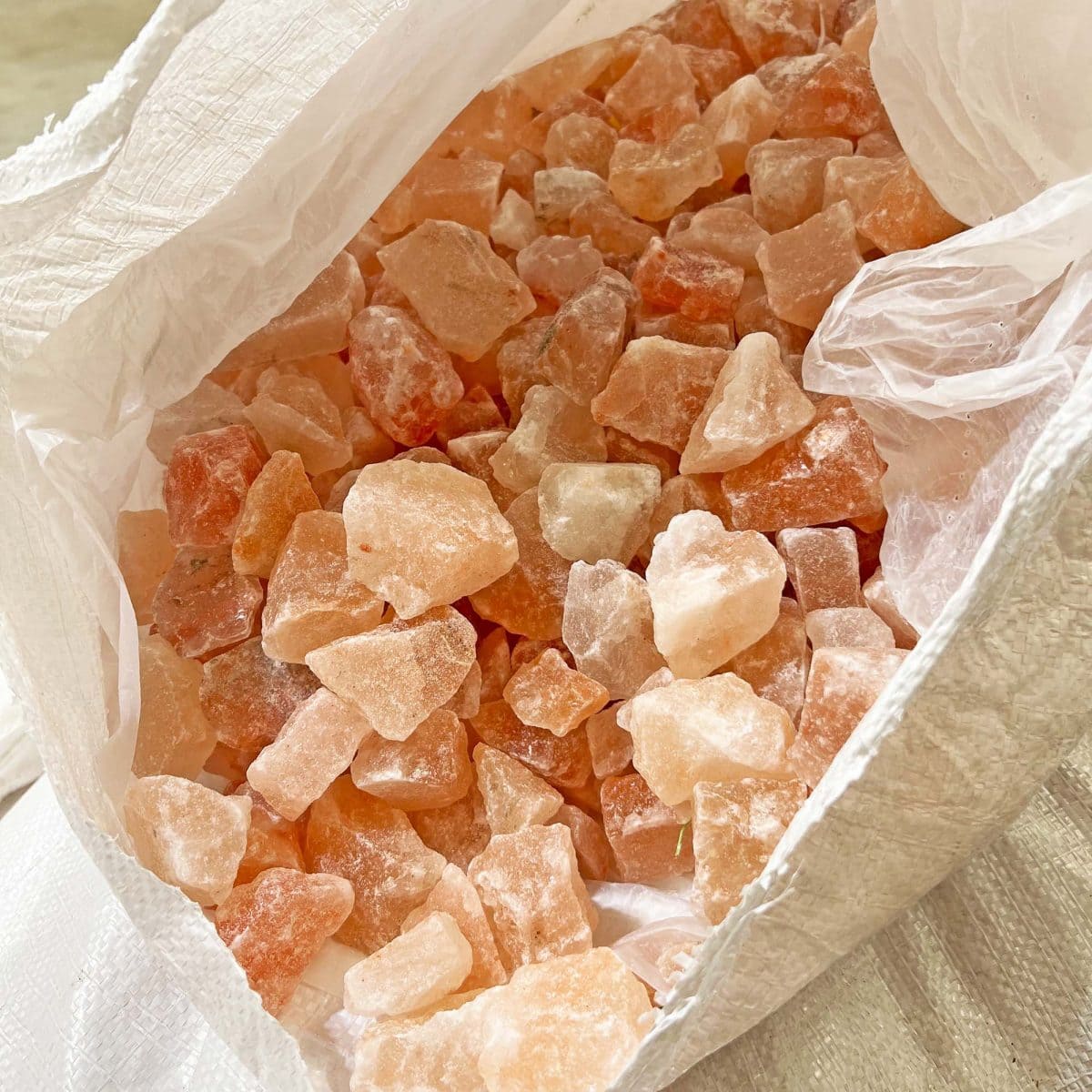Pink Himalayan salt, also known as Himalayan rock salt or Himalayan crystal salt, is a type of salt that is believed to originate from the Khewra Salt Mine in the Punjab region of Pakistan, near the Himalayas. The mine is estimated to be over 300 million years old, and it is believed that the salt deposits were formed from the evaporation of ancient bodies of water.
Pink Himalayan salt gets its distinctive pink color from the trace minerals and iron oxide content present in the salt crystals. The salt is typically hand-mined and minimally processed to retain its natural mineral content, which gives it its unique color, texture, and purported health benefits.
The use of pink Himalayan salt has gained popularity in recent years due to its perceived health benefits and unique flavor profile. It is claimed to contain over 80 trace minerals, including magnesium, potassium, and calcium, which are believed to provide various health benefits. However, it’s important to note that the amounts of these trace minerals in pink Himalayan salt are relatively small, and the health claims associated with them are not supported by robust scientific evidence.
As for the amount of pink Himalayan salt used per year, it’s difficult to determine an exact figure as it can vary greatly depending on factors such as demand, production, and usage patterns. However, it is considered a specialty salt and is generally used in smaller quantities for cooking, seasoning, and as a decorative element in some culinary applications.
Some of the most common uses of pink Himalayan salt include:
- Culinary purposes: Pink Himalayan salt is used in cooking and seasoning, just like regular table salt. It can be used in various recipes to add flavor and enhance the taste of food.
- Bath salts: Pink Himalayan salt is also used as a component in bath salts and bath scrubs. It is believed to have therapeutic properties and can help relax muscles, detoxify the skin, and promote a sense of well-being.
- Decorative uses: Pink Himalayan salt is often used in decorative salt lamps, which are believed to release negative ions when heated and have potential benefits such as improving air quality and reducing stress.
- Health and wellness: Some people use pink Himalayan salt for its potential health benefits, such as using it in salt lamps or inhaling salt air in salt caves, which is believed to have respiratory health benefits. However, it’s important to note that scientific evidence supporting these health claims is limited.
To learn how one producer of Himalayan pink salt processes their salt, read this case study on MPE roller mills.




